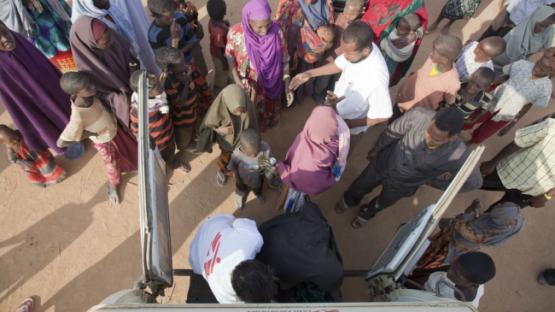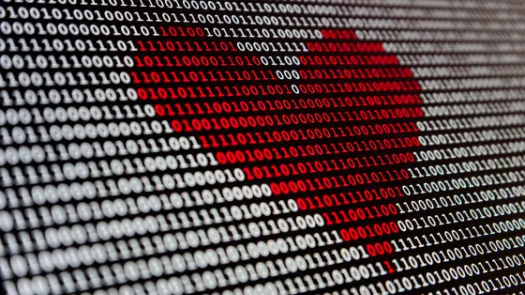Development And Humanitarian Aid Initiatives Enable Surveillance In Developing Countries

Privacy International today is proud to announce our new project, Aiding Privacy, which aims to promote the right to privacy and data protection in the development and humanitarian fields. Below is an outline of the issues addressed in our new report released today, Aiding Surveillance.
New technologies hold great potential for the developing world. The problem, however, is that there has been a systematic failure to critically contemplate the potential ill effects of deploying technologies in development and humanitarian initiatives, and in turn, to consider the legal and technical safeguards required in order to ensure the rights of individuals living in the developing world.
In a report published by Privacy International today, Aiding Surveillance, we show that as development and humanitarian donors and agencies rush to adopt new technologies, they may be creating and supporting surveillance systems that pose serious threats to human rights, particularly the right to privacy. This post highlights four technologies that are part of this trend and which are described in greater detail in the report.
Management Information Systems and electronic transfers
Management Information Systems are electronic systems that facilitate the gathering and storing of extensive amounts of personal data in what are often insecure or high risk environments. They are often used to manage information about those receiving social assistance, for example. Where donors or development agencies administer the scheme, and where private-public partnerships are integrated into the scheme, the potential for abuse of beneficiaries’ personal information is high. These concerns are particularly serious in low-income countries where data protection laws are weak, or non-existent. Additionally, by enabling the digitisation and indefinite preservation of potentially inaccurate data, such systems risk reinforcing and institutionalising inaccuracies, which may be impossible for beneficiaries to correct.
Similar concerns exist with the move by aid agencies away from cash or in kind transfers and towards electronic transfers. The card- or mobile- enabled conversion of cash into electronic money has been a hugely successful advancement in the provision of social protection transfers in developing countries. However, sophisticated databases, the sharing of those databases with third parties, and the lack of technical and operational security around the collection, use and sharing of data all create a heightened risk framework, at the heart of which are the very people agencies seek to support.
Digital identity registration and biometrics
Increased pressure to focus aid where it is needed most and to monitor aid programmes has resulted in a strong push for greater information on aid recipients, including detailed personal information. Technologies are changing the impact and importance of identity registration in two ways: first, they are enabling the digitisation and centralisation of personal information, its use across government services, and the continual checking of identity. Second, technological advancements have facilitated the capture, processing and retention of biometrics, physical traits of individuals including fingerprints, facial scans, iris scans, or even DNA.
One of the predominant reasons why digital identification systems, particularly those containing biometrics, have faced resistance in developed countries is the potential for scope creep: once collected, biometrics can be re-used for a variety of other purposes. Therefore, a system that is designed for the purpose of disbursing aid and entitlement services will soon be used for verifying citizenship and age, and biometrics may be checked and compared with those for policing purposes. Further, the ability for digital identification systems to be used as a means of surveillance has been recognised by producers of biometric technologies and even emphasised as a selling point to make the technology attractive to repressive regimes.
Mobile phones and data
The use of mobile phones in developing countries to collect or generate data, and the subsequent analysis of such data, has the potential to assist in development and humanitarian initiatives in multiple ways. But in an age of widespread communications surveillance by both State and non-State actors, using mobile networks to transmit sensitive data is inherently risky. Development and humanitarian initiatives that use mobile phones to collect or generate information thus risk such information being exposed to potentially malevolent third parties; or fraudulently amended or misappropriated.
Gathering and analysing big data sets of mobile phone activity also presents a serious challenge to the protection of individuals. Digitising data and pairing it with multiple other data sources can result in the mosaic effect, allowing for data elements that in isolation appear innocuous to be combined to enable the detailed profiling of individuals. Data is not without context: it can be politicised or misrepresented and yet come to represent an authoritative version of the truth, having serious implications for decision-making that could deeply affect individuals’ life choices and futures.
Border surveillance and security
The nexus between security and development and the recognition that security helps to create the necessary conditions for development has long been at the heart of many development and humanitarian interventions. Proponents of border security technology – which includes the use of biometric registration schemes, automated gates and digitised entry and exit systems – argue that such technology, in addition to minimising illegal border flows, can improve mobility, efficiency and enable freedom of movement to legitimate travellers and migrants.
However, without strong legal frameworks and constitutional protections to forestall abuse, improving the power and capacity of law enforcement and intelligence agencies represents a threat to the most vulnerable people. Political instability and corruption also make new technologies vulnerable to misuse or misappropriation by repressive State actors or authoritarian elements. And in more democratic settings, the provision of security assistance may compromise the independence of security forces and law enforcement, making them dependent on foreign donors.
Looking forward
While technologies and new programmes may help target, support, and secure development, their adoption must be subjected to rights-based questions about whether they are the necessary, proportionate, and effective methods for development, and whether legal frameworks exist to protect against human rights abuses. The challenge is to improve access to and understanding of technologies, ensure that policy makers and the laws they adopt respond to the challenges and potentialities of technology, and generate greater public debate to ensure that rights and freedoms are negotiated at a societal level. The benefits of development and humanitarian assistance can be delivered without surveillance.



